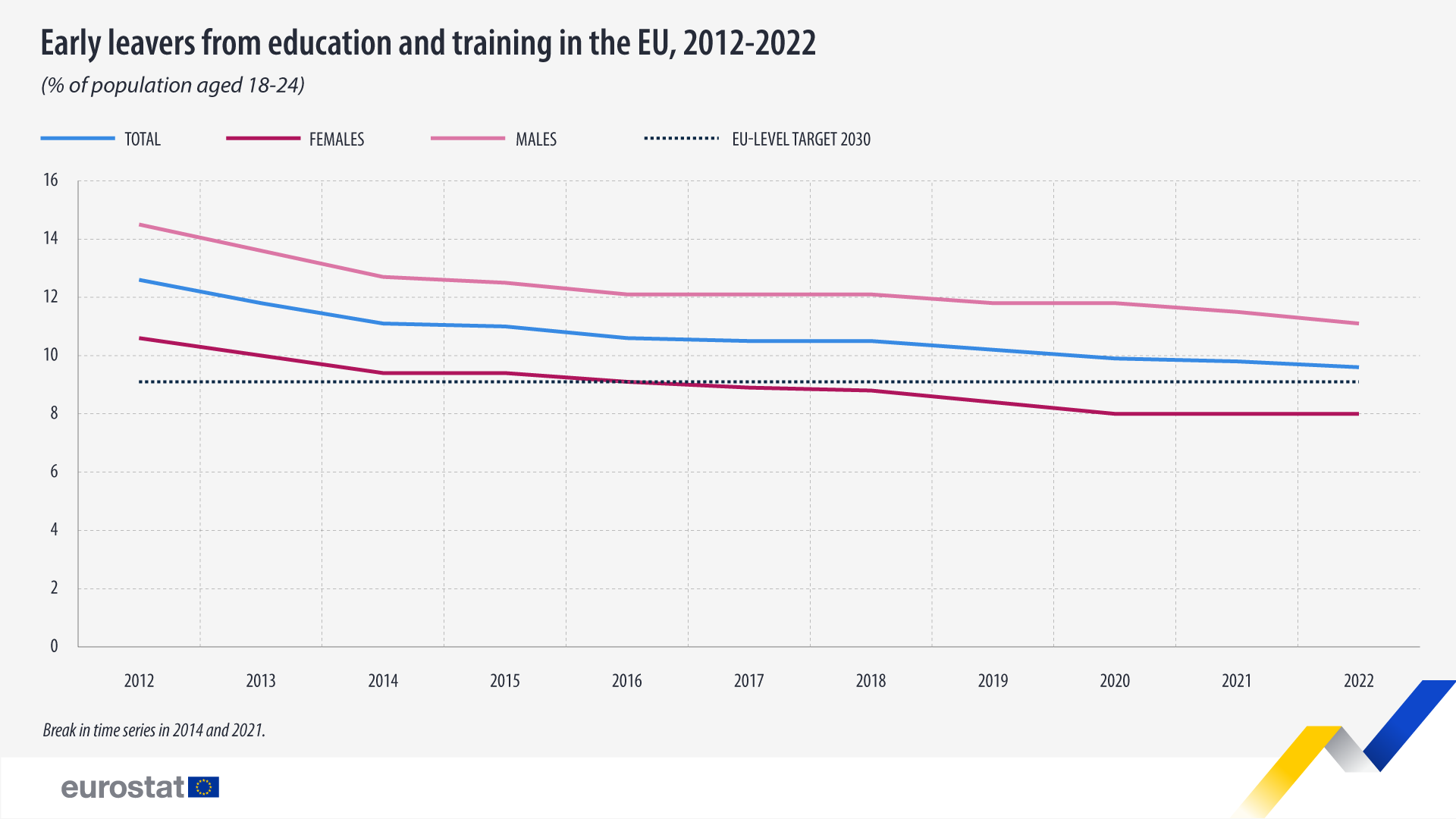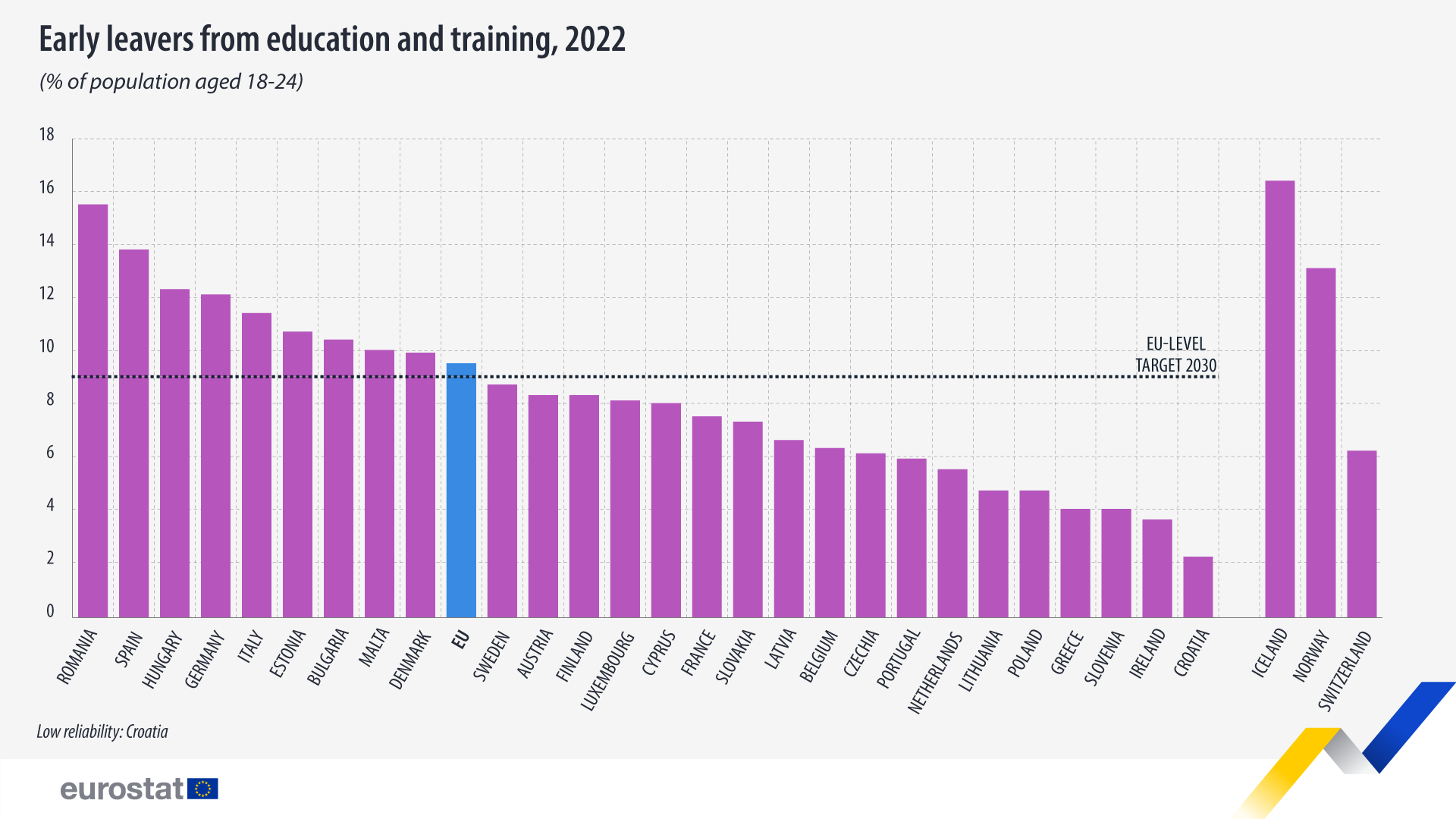Early school leavers down to 10% in 2022

The share of “early school leavers” (young people aged 18-24 leaving early from education and training) has steadily decreased in the EU over the last 10 years, from 13% in 2012 to 10% in 2022. But still, there is some way to go to reach the target of reducing the rates of early school leavers at the EU level to below 9% by 2030.
Data show that more young men left education and training early than women in 2022, 11% of men vs 8% of women. The share of men decreased from almost 15% in 2012 to 11% in 2022. Regarding young women, the share fell from almost 11% in 2012 to 8% in 2022.
Compared with 2012, two-thirds of all EU members reported a smaller share of early leavers in 2022, except for Czechia, Denmark, Germany, Estonia, Luxembourg, Hungary, Austria, Slovakia and Sweden, which reported small increases (the highest being around +2 pp).
Source dataset: edat_lfse_14
Lowest share of early school leavers in Croatia; highest in Romania and Spain
In 2022, the EU members that reported the lowest shares of early leavers from education and training were Croatia (2%), Ireland, Slovenia and Greece (each 4%), Poland and Lithuania (each 5%).
In contrast, the highest shares were recorded in Romania (16%), Spain (14%), Hungary, Germany and Italy (each 12%).
Eighteen EU members have already met the EU-level target for 2030 for this indicator: Belgium, Czechia, Ireland, Greece, France, Croatia, Cyprus, Latvia, Lithuania, Luxembourg, the Netherlands, Austria, Poland, Portugal, Slovenia, Slovakia, Finland and Sweden.
Source dataset: edat_lfse_14
In 2022, the share of early leavers from education and training was lower for young women than for young men across all EU members apart from Bulgaria (men 9%, women 12%) and Greece (men 4%, women 5%).
For more information
- Statistics Explained article on early leavers from education and training
- Thematic section on education and training
- Database on education and training
Methodological notes
- The indicator ‘early leavers from education and training’ is defined as the percentage of the population aged 18-24 with at most a lower secondary education and not in further (formal or non-formal) education or training during the four weeks preceding the survey. 'At most lower secondary education' refers to ISCED (International Standard Classification of Education) 2011 level 0-2 for data from 2014 onwards and to ISCED 1997 level 0-3C short for data up to 2013. The change of ISCED has no impact on the comparability over time of this indicator for all Member States, except Estonia.
- Break in time series in 2014 and 2021.
- Low reliability for Croatia.
If you have any queries, please visit our contact us page.


